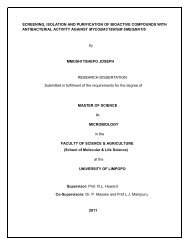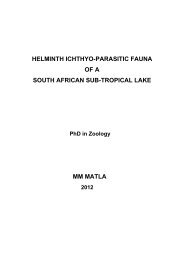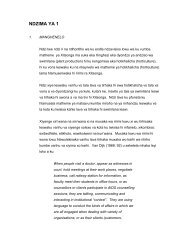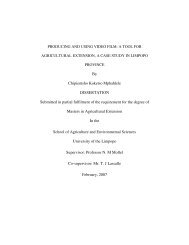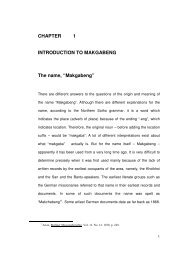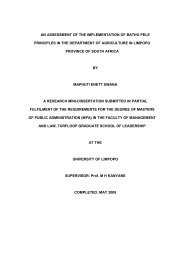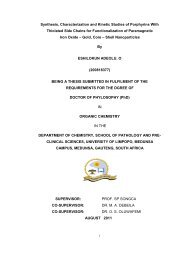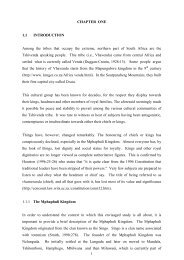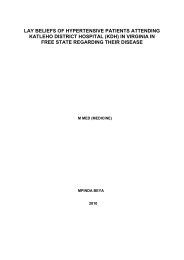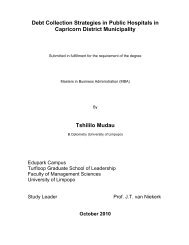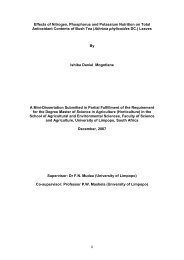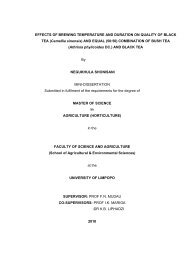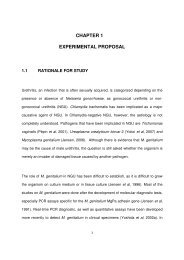Hlahla LN Mini-Dissertation.pdf - University of Limpopo Institutional ...
Hlahla LN Mini-Dissertation.pdf - University of Limpopo Institutional ...
Hlahla LN Mini-Dissertation.pdf - University of Limpopo Institutional ...
Create successful ePaper yourself
Turn your PDF publications into a flip-book with our unique Google optimized e-Paper software.
indicators in the tea industry (Fernando and Roberts, 1984; Taylor et al., 1992).<br />
There are several factors such as cultivars (Owour et al. 2000), environmental<br />
conditions (Chiu, 1989), cultural practices (Taylor et al., 1992) and seasonal variations<br />
(Sud and Baru, 2000) that affect tea quality.<br />
Temperature: The colour <strong>of</strong> honeybush tea improves with increasing fermentation<br />
temperature whereas polyphenols decreased with increasing drying temperature<br />
(Toit and Joubert, 1999). According to John (1980), teas produced at higher<br />
temperatures contain more <strong>of</strong> the thearubigin pigments, including the polymeric<br />
fraction known as the non-dialysable material. In the case <strong>of</strong> black tea, low<br />
fermentation temperatures improve black tea quality hence long fermentation<br />
duration and high temperature favour the production <strong>of</strong> more intense coloured black<br />
teas with high thearubigin levels (John, 1980).<br />
Time: After cutting, tea is subjected to a so-called fermentation. This process is not<br />
actually a fermentation, which is an anaerobic process, but rather an enzymatic<br />
oxidization <strong>of</strong> the polyphenols in the tea leaves (Owour and McDowell, 1994),<br />
yielding theaflavins and thearubigins (Robertson, 1983). When the tea leaves are<br />
dry, fermentation stops, allowing some control <strong>of</strong> the process by manipulation <strong>of</strong> the<br />
drying rate or adding water after drying. The compounds responsible for tea quality,<br />
such as theaflavins (TF) and thearubigins (TR) increase with fermentation time<br />
(Hampton, 1992). Caffeine concentration remained unchanged (Hampton, 1992).<br />
Polyphenols declined more quickly during the initial stages, followed by a steadily<br />
declining trend. Fermentation time had little impact on the gallic acid concentration<br />
(Lakshminarayanan and Ramaswamy, 1978). Among the catechins, epigallocatechin<br />
oxidized fastest, followed by epigallocatechin gallate and epicatechin gallate (Katiyara<br />
and Mukhtar, 1996).<br />
5



